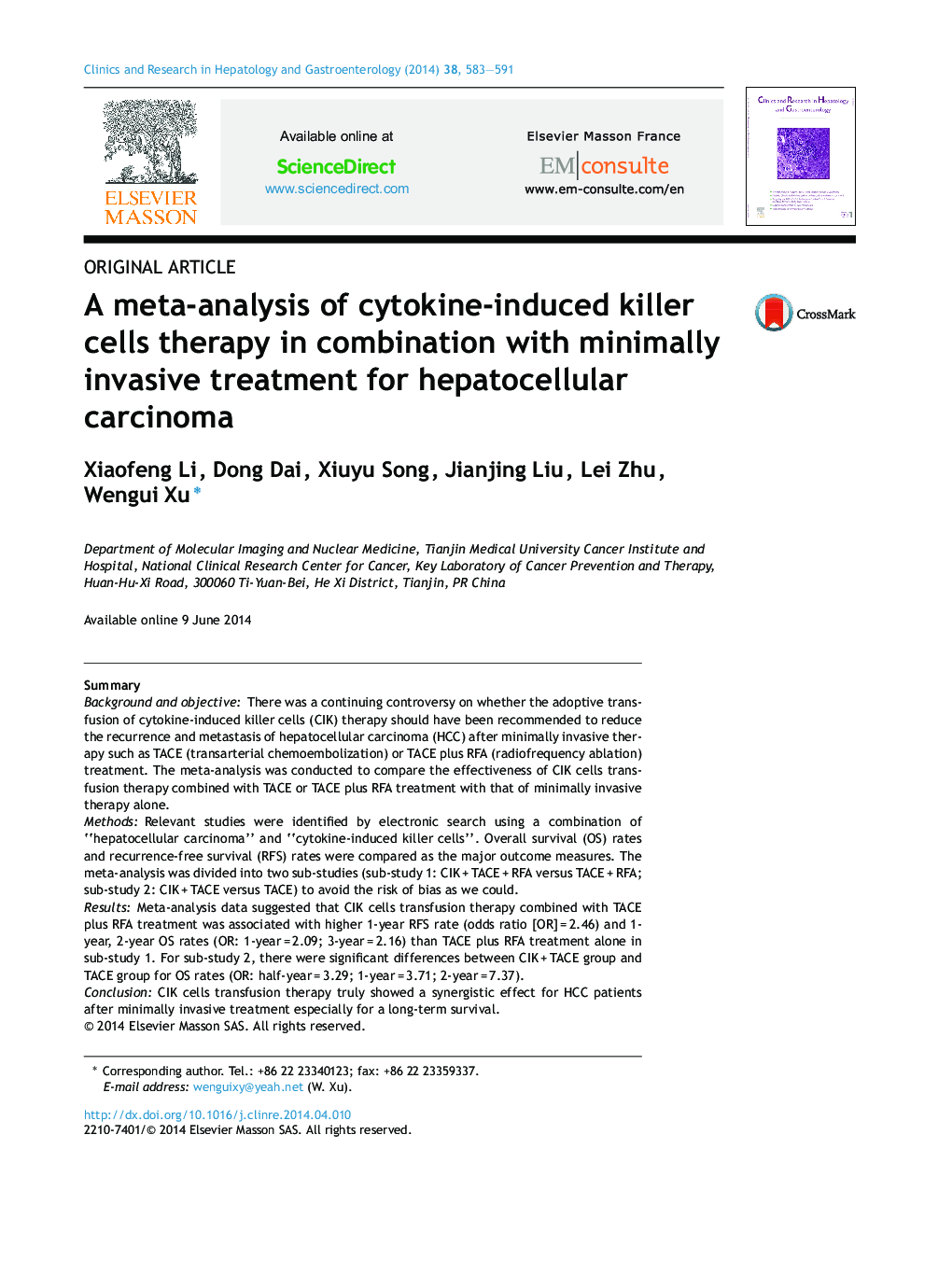| Article ID | Journal | Published Year | Pages | File Type |
|---|---|---|---|---|
| 3286441 | Clinics and Research in Hepatology and Gastroenterology | 2014 | 9 Pages |
SummaryBackground and objectiveThere was a continuing controversy on whether the adoptive transfusion of cytokine-induced killer cells (CIK) therapy should have been recommended to reduce the recurrence and metastasis of hepatocellular carcinoma (HCC) after minimally invasive therapy such as TACE (transarterial chemoembolization) or TACE plus RFA (radiofrequency ablation) treatment. The meta-analysis was conducted to compare the effectiveness of CIK cells transfusion therapy combined with TACE or TACE plus RFA treatment with that of minimally invasive therapy alone.MethodsRelevant studies were identified by electronic search using a combination of “hepatocellular carcinoma” and “cytokine-induced killer cells”. Overall survival (OS) rates and recurrence-free survival (RFS) rates were compared as the major outcome measures. The meta-analysis was divided into two sub-studies (sub-study 1: CIK + TACE + RFA versus TACE + RFA; sub-study 2: CIK + TACE versus TACE) to avoid the risk of bias as we could.ResultsMeta-analysis data suggested that CIK cells transfusion therapy combined with TACE plus RFA treatment was associated with higher 1-year RFS rate (odds ratio [OR] = 2.46) and 1-year, 2-year OS rates (OR: 1-year = 2.09; 3-year = 2.16) than TACE plus RFA treatment alone in sub-study 1. For sub-study 2, there were significant differences between CIK + TACE group and TACE group for OS rates (OR: half-year = 3.29; 1-year = 3.71; 2-year = 7.37).ConclusionCIK cells transfusion therapy truly showed a synergistic effect for HCC patients after minimally invasive treatment especially for a long-term survival.
